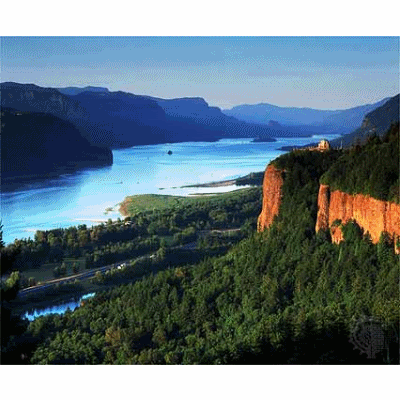Flow of Nile River and its tributeries
The Nile is the longest river in the world, stretching north for approximately 4,000 miles from East Africa to the Mediterranean. Studies have shown that the river gradually changes its location and size over millions of years. The Nile flows from the mountains in the south to the Mediterranean in the north.
There are three rivers that flows into the Nile from the south and thus serves as its sources: the Blue Nile, the White Nile and the Arbara. Egypt has always depended on the water of the Nile River. The two main tributaries of the Nile River are the White Nile and the Blue Nile. The source of the White Nile are the Sobat River Bahr al-Jabal (The "Mountain Nile") and the Blue Nile begins in the Ethiopian Highlands. The two tributaries converge in Khartoum, the capital of Sudan where they form the Nile River.
Within the southern section between Aswan and Khartoum land, there is a land which was called
Nubia, the River passes through formations of hard igneous rock, resulting in a series of rapids, or cataracts, which form a natural boundary to the south. Between the first and second cataracts lay a lower Nubia, and between the second and sixth cataracts lay an upper Nubia.
Along most of its length through Egypt, the Nile has scoured a deep, wide gorge in the desert plateau. At
Aswan North of the first cataract the Nile is deeper and its surface smoother. Downstream from Aswan the Nile flows northerly to
Armant before taking a sharp bend, called the
Qena. From
Armant to Hu, the River extends about 180 kilometers and divides the narrow southern valley from the wider northern valley.
Southern Egypt, thus being upstream, is called Upper Egypt, and northern Egypt, being downstream and the Delta, is called Lower Egypt. In addition to the Valley and the Delta, the Nile also divided Egypt into the Eastern and Western Deserts.
Water and air pollution continue to be a problem for the river. As development in the spheres of agriculture, industry, and urbanization have progressed among the human population, so too have the side effects associated with these practices increased, namely in the form of various pollutants. These pollutants range from agrochemicals to heavy metals to human waste products.
Though pollution in the Nile river is certainly a large concern, it should be noted that much of the river water is acceptably healthy and free of toxins. It is only in “black zones” near major drains that the water becomes unhealthy. Still, future measures should certainly be sought out to solve this problem before it does develop into a crisis.
Problems of river: Municipal pollutants, agricultural pollutants, industrial pollutants, water pollution, hydropower dams
Uses of river: Hydro-electricity, water for drinking, water for crops irrigation, water for domestic supply, water for industrial supply, water for industrial use, transportation, tourism, waste disposal and fishing
References/Sources:
Source for picture:
http://news.nationalgeographic.com/news/bigphotos/images/070619-amazon-river_big.jpghttp://sg.images.search.yahoo.com/search/images?p=nile+river&fcss=on&fr=yfp-t-101&toggle=1&cop=&ei=UTF-8Source for information:
http://wiki.answers.com/Q/What_are_the_Nile_Rivers_useshttp://sitemaker.umich.edu/sec004_gp5/pollution







